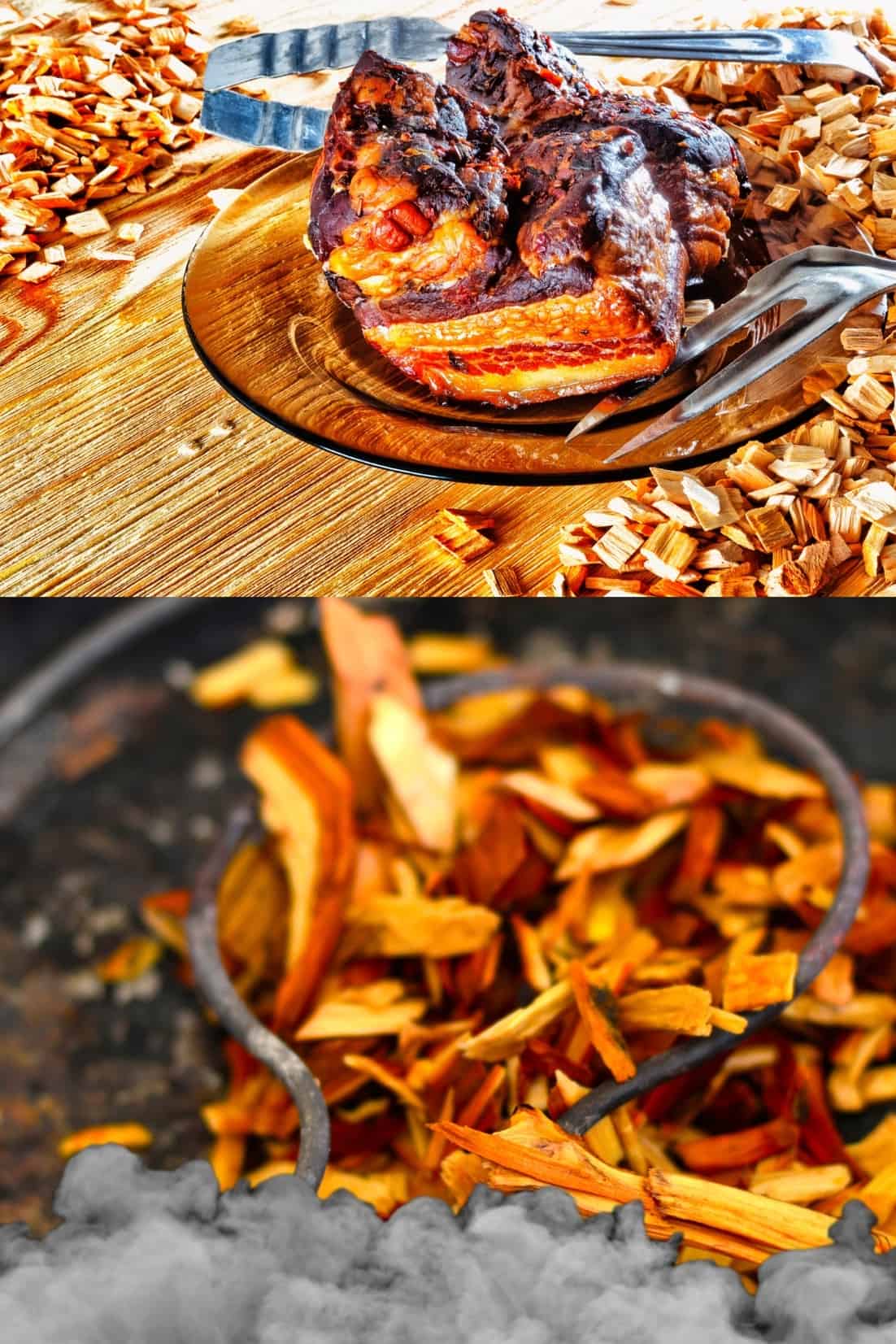I’m sure you have your favorite wood chip flavor ready to go. But are these chips creating enough smoke?
Wood chips smoke at a temperature between 570-750 degrees Fahrenheit, or 300-400 degrees Celsius. All wood chips smoke when they reach these temperatures, but fruitwoods (apple, peach) burn faster than nut woods (pecan) and hardwoods (hickory and mesquite).
In this guide, I’ll discuss the different aspects of heat when smoking with wood chips so you can get a low and slow burn and lots of smoke.

When you’re using wood chips to smoke your favorite meaty cuts, you know that the secret lies in smoking at the perfect temperature.
Not all wood chips will give that fantastic consistent smoke, and many may even start to burn too fast. Therefore, you’ve got to get your wood chips to the right temperature until they smolder.
If your wood chips have a temperature lower than 570 F, they won’t smolder and infuse the food with a smokey flavor.
As you know, smoke is extremely important for your foods because it gives meat that aroma and flavor you can only achieve by smoking.
In this post we'll cover:
Information about smoke & wood chips
First, what is smoke?
Well, it’s a complex combination of compounds that create flavor from wood.
Each wood has a different flavor, so you’ll get a much stronger aroma from hickory than from a light fruitwood like apple, for example.
There’s a difference between the burning wood temperature vs. the smoker’s temperature and the smoking environment.
When I talk about the ideal temp for wood chips to smoke, I refer to the actual wood chips’ temperature, not the heat inside the smoker or grill.
So if you use a meat thermometer to measure the food’s temperature, don’t rely on that reading to determine the actual temperature of the wood chips; that’s a different thing.
Be sure to check the chips themselves and not the air inside the smoker if you’re noticing issues with the smoke.
At temperatures between 570 and 750 F, the wood chips smolder. In fact, the ideal conditions for smoke flavor are these lower temps because the wood doesn’t merely combust into charcoal. Instead, it smolders for a longer time.
As you can tell, it’s important to keep in mind the distinction between the temperature of the wood chips and the ideal temperature to smoke your food.
When you smoke most meats, the smoker’s temperature should be somewhere between 225 to 250 F (107 – 121 C).
Also read: How does a BBQ smoker work?
How to control the temperature of the wood chips
Since you want to get to that temperature where the chips start to smoke, you need to control the heat. The goal is to reduce the oxygen levels so the chips smoke instead of combusting and burning too quickly.
The theory behind this is that as wood burns, it produces mostly heat, and very little smoke.
When you cook and smoke meat, you’re looking for the smoke to add flavor to the food. So you must reduce the flames to encourage smoldering.
When your wood chips just aren’t giving you enough smoke, lower the oxygen level.
The best option is to place the chips in a special smoker box. It’s a great addition to your smoker.
Be sure to check: 6 best pellet & wood chip smoker boxes & tubes for gas & charcoal grills.
How long does it take for wood chips to smoke?
It takes about 20 minutes for wood chips to start smoking in your smoker or the smoker accessory.
Actually, only after 20 minutes does the wood start to develop a delicious smoke flavoring!
How much wood chips do I need?
Typically, a handful of wood chips is enough for a short session of smoking (around 30 minutes). If you’re going to smoke for longer, then add another handful every half hour.
Should you soak wood chips?
There’s a common notion that wood chips should be soaked in water before use in the smoker. Apparently, this prevents the chips from catching fire.
So, is it really necessary to soak them?
While the theory that moisture slows down the combustion process makes sense, it’s not entirely correct.
In fact, if you soak the chips for an hour or so, they’ll actually release more steam, not more flavorful smoke!
The soaked chips may lower the smoker’s temperature, which may not be what your meat really needs. The wood chips must eliminate all that moisture first before they begin to smolder and smoke.
Only when the wood chips reach the boiling point of water (212 F or 100 C) will they stop steaming.
So you’ll have to wait a bit longer to get your smoke!
Help, the wood chips don’t smoke!
Many smokers complain about some types of wood chips not creating enough smoke for a whole smoking session.
The most common problem is that the wood isn’t moist enough and is too dry. This could be the result of over-seasoning.
What’s the lowest temperature wood chips will smoke?
If your wood chips won’t smoke, it could be that the chips aren’t at the ideal temperature. Either they’re below the 575 F minimum required for smoking or they’re way too hot and over 750 F. In the latter’s case, the wood chips simply burn rapidly before your meat can gain the delicious flavors.
What’s happening is that you’re cooking the meat as opposed to smoking it.
The bottom line is to ensure your wood chips are at a temperature of 570-750 F (300-400 C) in order to gain the most flavor from the smoke.
Cold outside? Check out my recommendations for the best BBQ smoker insulation blankets and covers.
